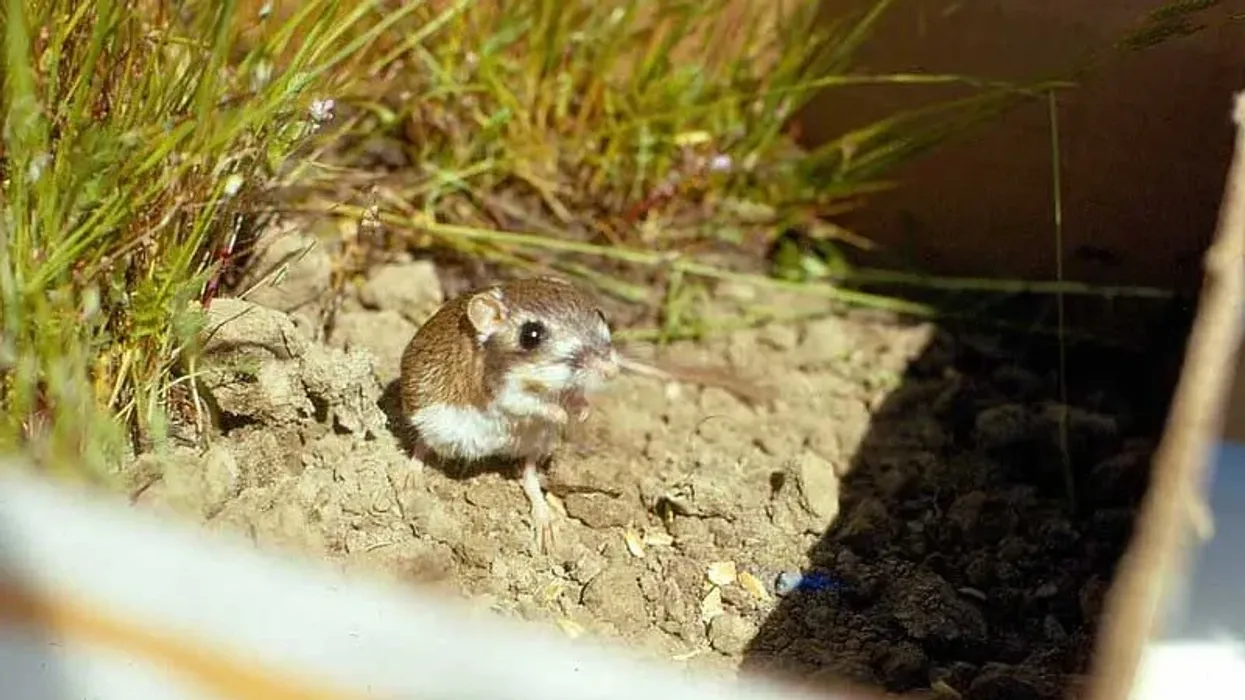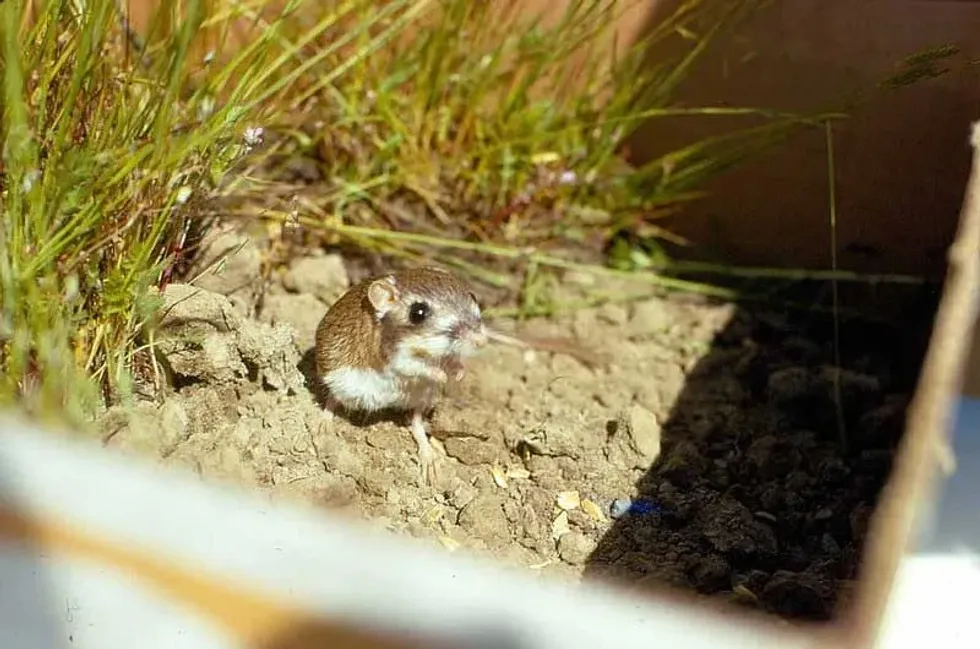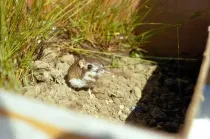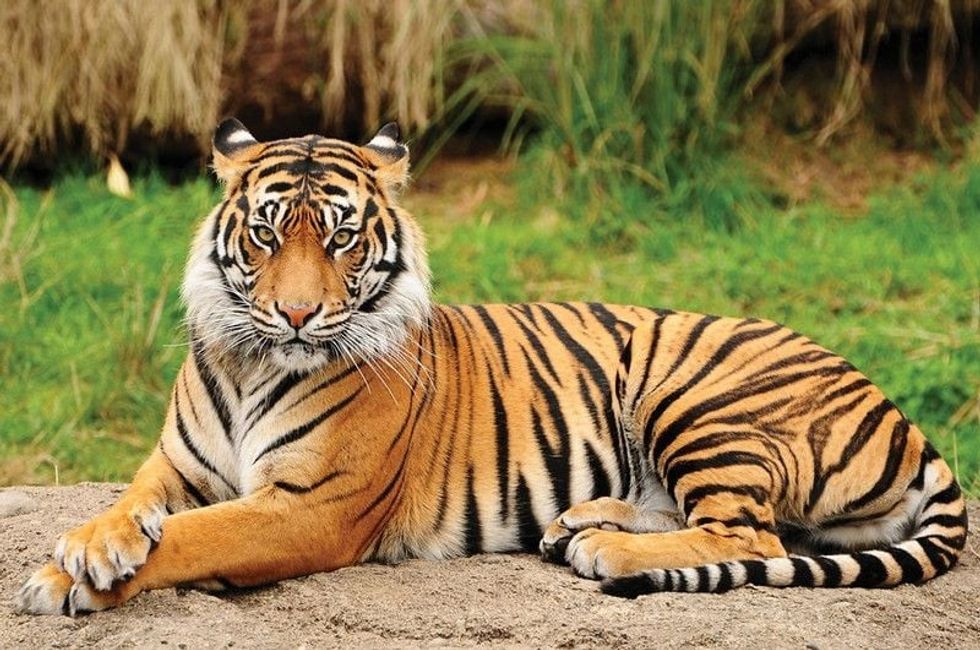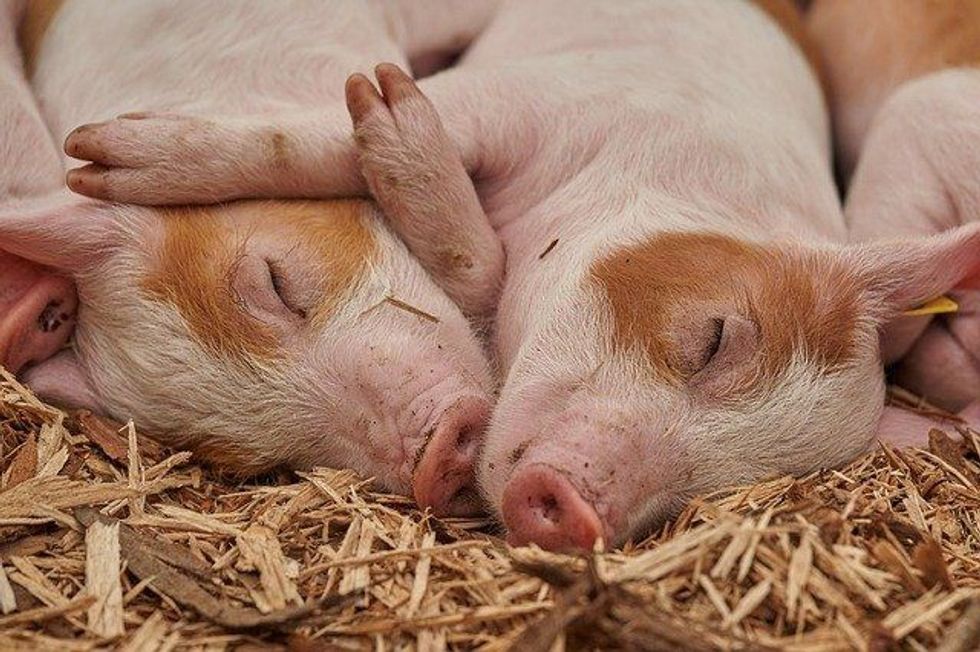A Fresno kangaroo rat (Dipodomys nitratoides exilis) is one of the three subspecies of the San Joaquin kangaroo rat (Dipodomys nitratoides). The other two subspecies are the Tipton kangaroo rat (Dipodomys nitratoides nitratoides) and the short-nosed kangaroo rat (Dipodomys nitratoides brevinasus).
Fresno kangaroo rats are small rodents native to the San Joaquin Valley of California in the United States of America.
These rodents move by bipedal hopping, meaning that they use their large hind limbs for hopping and their long tufted tail for balance. Because of this bipedal hopping behavior, these rodents have derived the common name, kangaroo, for this species.
Search this article for more exciting facts about this endangered species, and if you like reading, do consider our articles on naked mole-rat facts and incredible muskrat facts.
Fresno Kangaroo Rat Interesting Facts
What type of animal is a Fresno kangaroo rat?
The Fresno kangaroo rat is a species of rodents in the Heteromyidae family.
What class of animal does a Fresno kangaroo rat belong to?
The Fresno kangaroo rats are rodents belonging to the Mammalia class.
How many Fresno kangaroo rats are there in the world?
The global population of the Fresno kangaroo rats is unknown. However, the estimated occupancy area of Fresno kangaroo rats is about 160 hectares (395.4 acres) throughout its distribution range in North America.
Where does a Fresno kangaroo rat live?
The geographical range of Fresno kangaroo rats covers the grasslands and scrub communities of the San Joaquin Valley of California, with boundaries in Merced County to the North, Kings County to the South, Fresno County, and Madera County to the West.
What is a Fresno kangaroo rat's habitat?
The distribution range of Fresno kangaroo rats is less compared to the other San Joaquin kangaroo rat subspecies, D. n. nitratoides and D. n. brevinasus. The preferred habitat for this species is burrows dug in sandy loam soil combined with herbaceous vegetation with scattered shrubs as the above-ground cover.
Usually, the burrow covers a surface area of 49-144 sq. ft (14-45m). Few burrow systems have short dead-end tunnel arrangements used as escape routes to prevent any possible threat by predators.
Who do Fresno kangaroo rats live with?
The Fresno kangaroo rats do no cohabit with other animal species. However, their burrows are often occupied by blunt-nosed leopard lizards and other reptiles.
How long does a Fresno kangaroo rat live?
There is no information to justify the lifespan of a Fresno kangaroo rat. However, as the life expectancy of all the kangaroo rat species is not very long and is two to three years, it is presumed that the lifespan of the Fresno kangaroo rats also falls in this range.
How do they reproduce?
Little information is available on the mating behavior of a Fresno kangaroo rat. However, it is presumed that their mating behavior is identical for all kangaroo rat species with a difference in breeding season and gestation period. Fresno kangaroo rats usually breed twice or thrice a year and use burrows for breeding.
Preferably, they start breeding in winter. After the gestation period of four to five weeks, the females give birth to two to three young ones.
The young ones are born completely blind and with a bit of fur. The young ones remain in the burrow until the fur grows fully. During this time, they depend on maternal caches for food.
What is their conservation status?
The Fresno kangaroo rats are endangered species and are classified as Vulnerable by the International Union for Conservation of Nature (IUCN). The other two subspecies of the San Joaquin kangaroo rat, i.e., the Tipton kangaroo rat and the short-nosed kangaroo rat, are also classified as Endangered species.
Little is known about the population of these species, and the reason for endangered status is primarily due to habitat loss.
Fresno Kangaroo Rat Fun Facts
What do Fresno kangaroo rats look like?

*Please note that this is an image of a Tipton kangaroo rat, not a Fresno kangaroo rat. If you have an image of a Fresno kangaroo rat, please let us know at hello@kidadl.com
The Fresno kangaroo rat (Dipodomys nitratoides exilis) is the smallest of the San Joaquin kangaroo rat (Dipodomys nitratoides) subspecies with a head and body length of about four inches. Like other rodents in the Heteromyidae family, its tail is longer than its combined head and body length.
Its body is covered with tawny yellow fur on the head and back and white on the belly.
A white stripe runs across its hip and continues down the sides of its black tail. It is equipped with fur-lined external cheek pouches open alongside the mouth and is used for collecting the seeds from grass plants and carry them to the borrows for storage.
It has dark whisker patches on the sides of the nose connected by black fur.
Its front legs are comparatively shorter than the rear legs but are equipped with stout claws that help dig burrows. It resembles a tiny kangaroo while in a standing position.
How cute are they?
Few people may consider a Fresno kangaroo rat scute because of their appealing appearance. However, it cannot be domesticated due to its habitat preferences.
How do they communicate?
Little is known about the mode of communication between Fresno kangaroo rats. Generally, kangaroo rats communicate by chattering their teeth, drumming their feet, and vocal signals like squeaks, low grunts, and growls.
How big is a Fresno kangaroo rat?
Like some other animal species, Fresno kangaroo rats also exhibit sexual dimorphism, i.e., males grow larger than females. Usually, male species grow up to 9.1 in (23.1 cm) long, while females grow up to 8.9 in (22.5 cm).
How fast can a Fresno kangaroo rat run?
A Fresno kangaroo rat does not run. Instead, it jumps using its hind legs and often leaps a distance of 7-9 ft (2.1-2.9m). It moves at a speed of 6 mph (9.7 kph).
How much does a Fresno kangaroo rat weigh?
A Fresno kangaroo rat weighs less than the three subspecies of a San Joaquin kangaroo rat. Usually, it weighs in the range of 0.07 to 0.11 lb (31.8-49.9 gm).
What are the male and female names of the species?
There are no sex-specific names for the Fresno kangaroo rat.
What would you call a baby Fresno kangaroo rat?
There is no information on the specific name for a baby Fresno kangaroo rat.
What do they eat?
Fresno kangaroo rats prefer seeds of grassy plants along with small amounts of green herbaceous vegetation as their food.
Are they dangerous?
Fresno kangaroo rats are a territorial species. However, there is no recorded evidence to prove that they are aggressive or any incidents of human encounters. Therefore, it is presumed that they are not dangerous.
Would they make a good pet?
No, these rodents cannot be domesticated in human habitats as they prefer conditions more similar to deserts.
Did you know...
The three subspecies of San Joaquin kangaroo rats have a few similarities in appearance and food preference.
However, they differ in population distribution range, habitat preferences, breeding season, and the average litter size. Therefore, the only way to differentiate the three subspecies is by their body length, i.e., the largest one being short-nosed kangaroo rat while the smallest one being Fresno kangaroo rat.
In addition, the San Joaquin kangaroo rat can be differentiated from other kangaroo rat species within its geographical range by four toes on its hind foot, while other species have five toes.
Seed collection in cheek pouches and bipedal hopping behaviors exhibited by the kangaroo rats makes them unique among all other rodent species. Another interesting fact is that the kangaroo rats have perfectly adapted to desert life, i.e., they can survive without drinking water and get the required moisture from their seed diet.
Furthermore, to keep their body cool and protect from hot temperatures, they stay in their burrows during the day and come out in search of food at night.
It is suggested to place traps at the entrance of the burrows to get rid of kangaroo rats.
Why is the Fresno kangaroo rat endangered?
Loss of habitat due to agricultural development activities and urbanization, along with fragmentation and isolation of populations, is the primary reason for the endangered status of Fresno kangaroo rat species. Flooding also poses a high risk because of the proximity to the San Joaquin River.
It may lead to the local extinction of the species. Other potential threats are the use of rodenticides and threats from its natural predators like San Joaquin kit foxes, snakes, owls, and badgers.
What did kangaroo rats evolve from?
The kangaroo rat's evolution history began 11.2 million years ago in North America. The closest surviving relatives of kangaroo rats are kangaroo mice and pocket mice.
Here at Kidadl, we have carefully created lots of interesting family-friendly animal facts for everyone to discover! Learn more about some other mammals from our rock hyrax facts and elephant shrew facts pages.
You can even occupy yourself at home by coloring in one of our free printable fresno kangaroo rat coloring pages.

